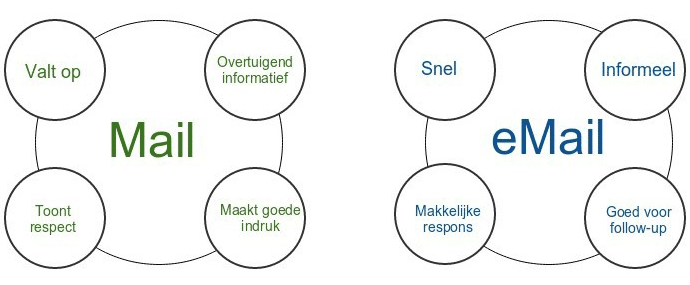Marketing today is all about the right mix of channels. The perfect balance between online and offline. A lot of attention is currently being paid to online channels, such as social media. Because by embracing the smartphone, consumers now have access to information, products and companies anywhere, anytime. It is logical that companies want to respond to this; not only is everything via the internet fast and accessible, but it is also cheap. But the question that Sandd's Ivo Cerfontaine asks himself is: "Is online still that effective?". A valid question, because we all have overflowing mailboxes. And then there is also a whole load of spam and fraud mail. This reduces the response rate to email. Are there opportunities here for direct mail?
Many companies have cut back on direct mail in times of crisis. In addition, digital media have changed the marketing and communication landscape. As a result, the classic letterbox has become emptier in recent years. This while physical mailings still deliver desired results and response. But money can only be spent once, and the trillions are now mostly spent on Internet advertising. PwC even predicts that in three years' time more money will be spent on online advertising than on TV advertising. What a huge change from a few years ago!
But research from Royal Mail shows that it is a mistake to now spend the entire marketing and communication budget on online channels. Because research shows that what you get in percentages via the letterbox, you get in percentages via e-mail. “Suppose a letter through the letterbox reaches 5%, then you reach 5 promille via e-mail. With that knowledge, you end up with 5 respondents with 100 'mails' sent via the letterbox and with e-mail with 0.5 respondent. In this way, cheap suddenly turns out to be expensive.” Says Ivo Cerfontaine of business mail carrier Sandd. It turns out that e-mail and direct mail do not achieve the optimum effect separately from each other. But what does work?
Customers are clear about the fact that mail and email have different qualities and are therefore applicable to different areas and purposes. In short, customers expect and want to be approached in different ways for different purposes. Email is seen as fast, informative, convenient for follow-ups, and easy for a response. Direct mail, on the other hand, grabs the recipient's curiosity and attention, is also informative, gives recipients a sense of appreciation and leaves a good impression. Physical mailings create an emotional connection between the sender and the recipient. The use of direct mail adds a whole new target group to the potential customers. Physical mail is therefore a good addition to e-mail.

The investigation of Royal Mail shows that 51% customers like to receive both (email and direct mail). And 17% only wants to receive direct mail. So if you only use email as a channel, two thirds of the customers are dissatisfied. Because the expectations and effective purposes of email and direct mail differ, they complement each other perfectly. When email and direct mail used together will lead to better results. More action, more loyalty and more sales; two can do more than one.


